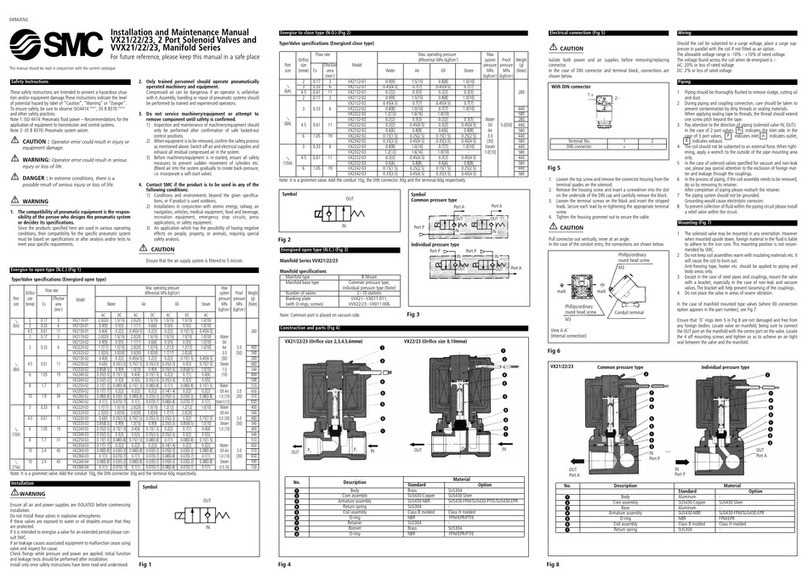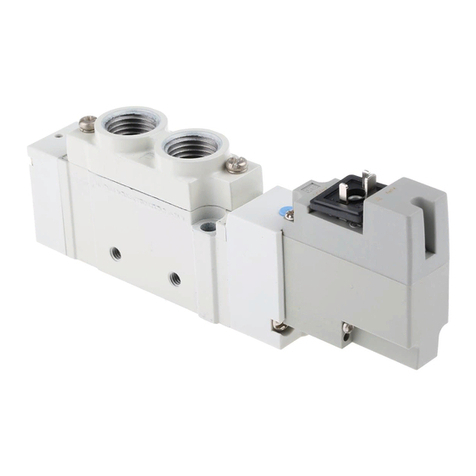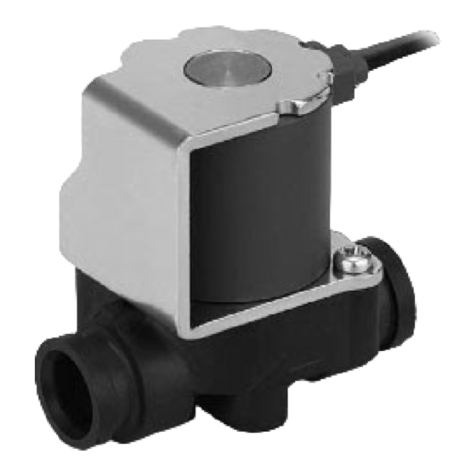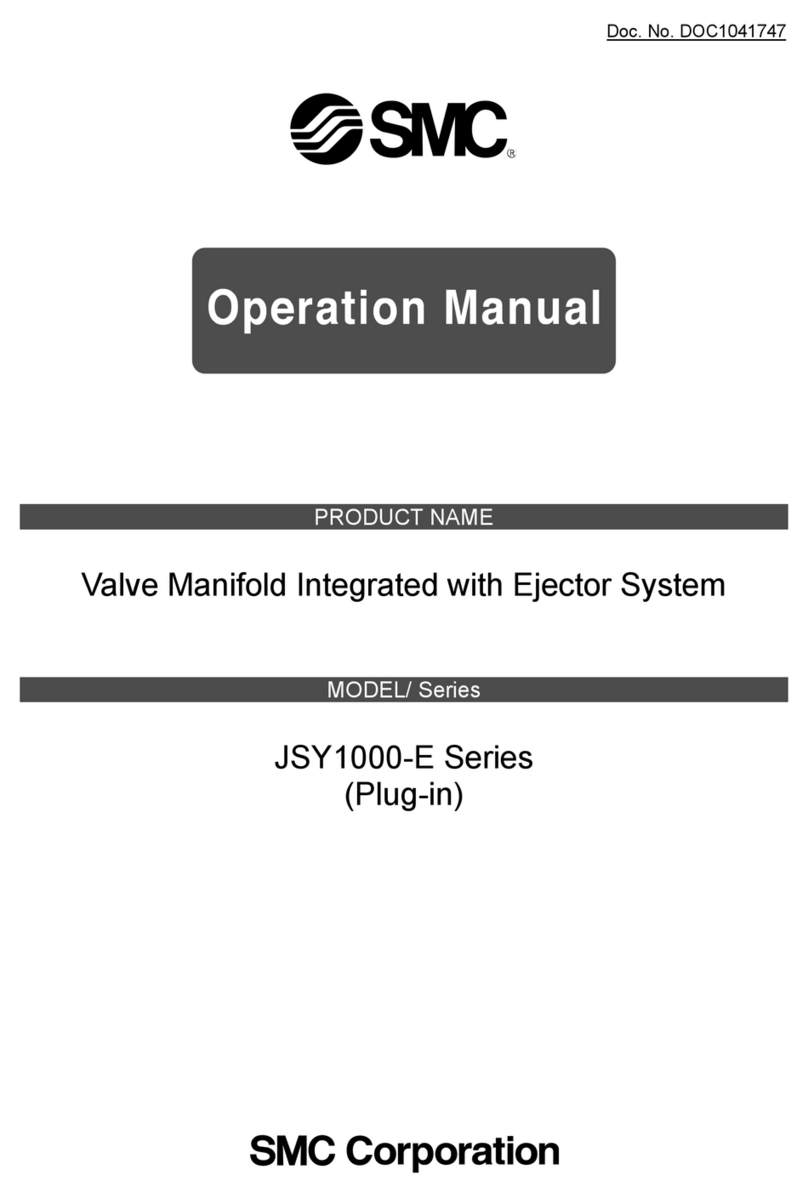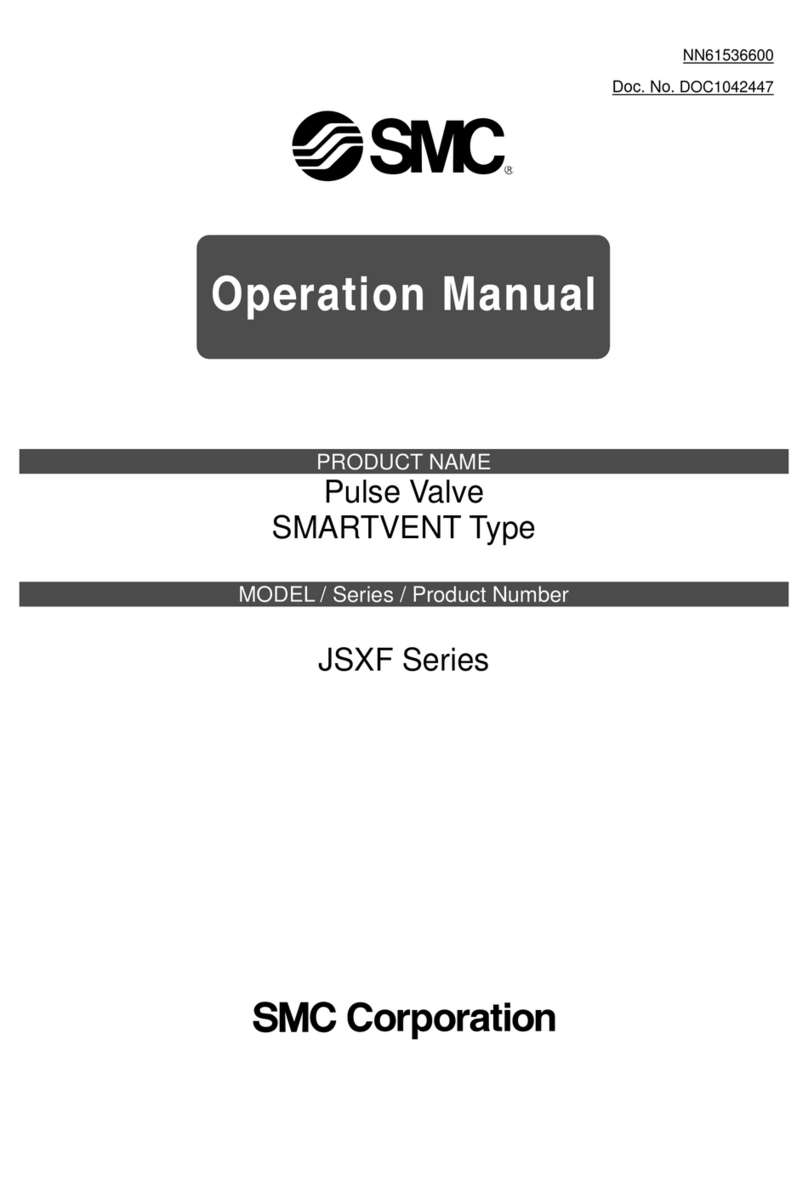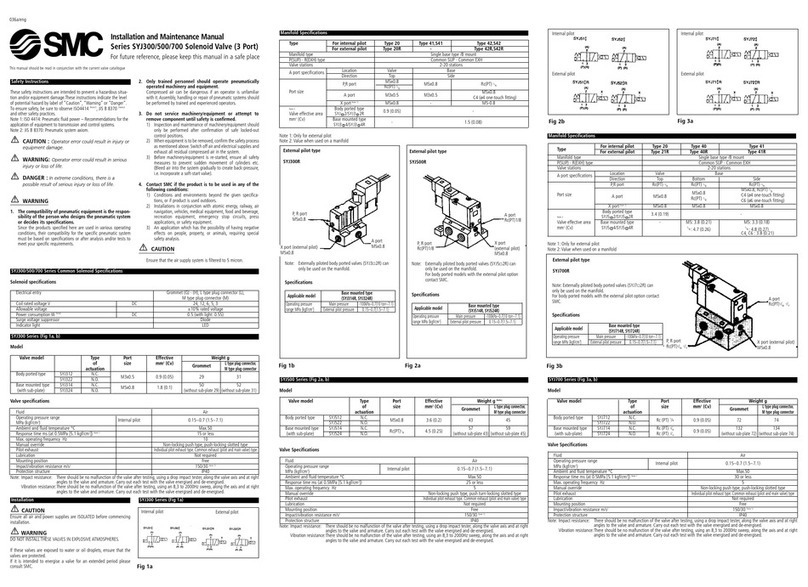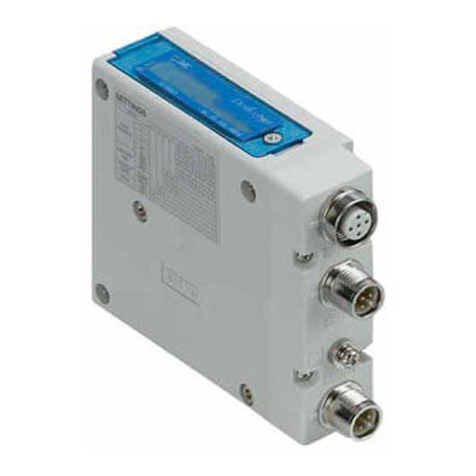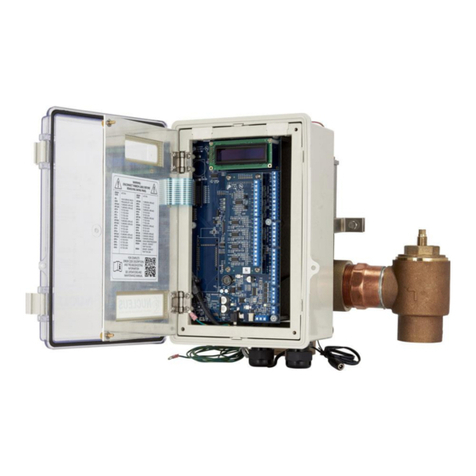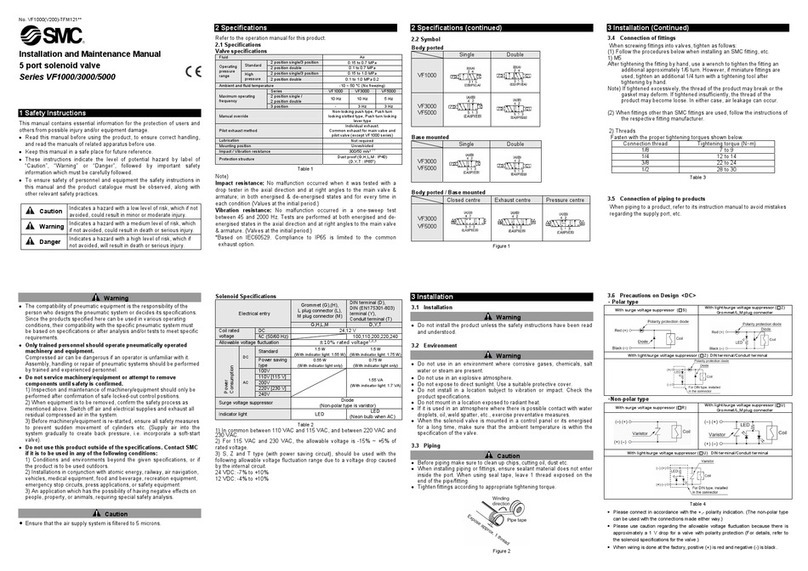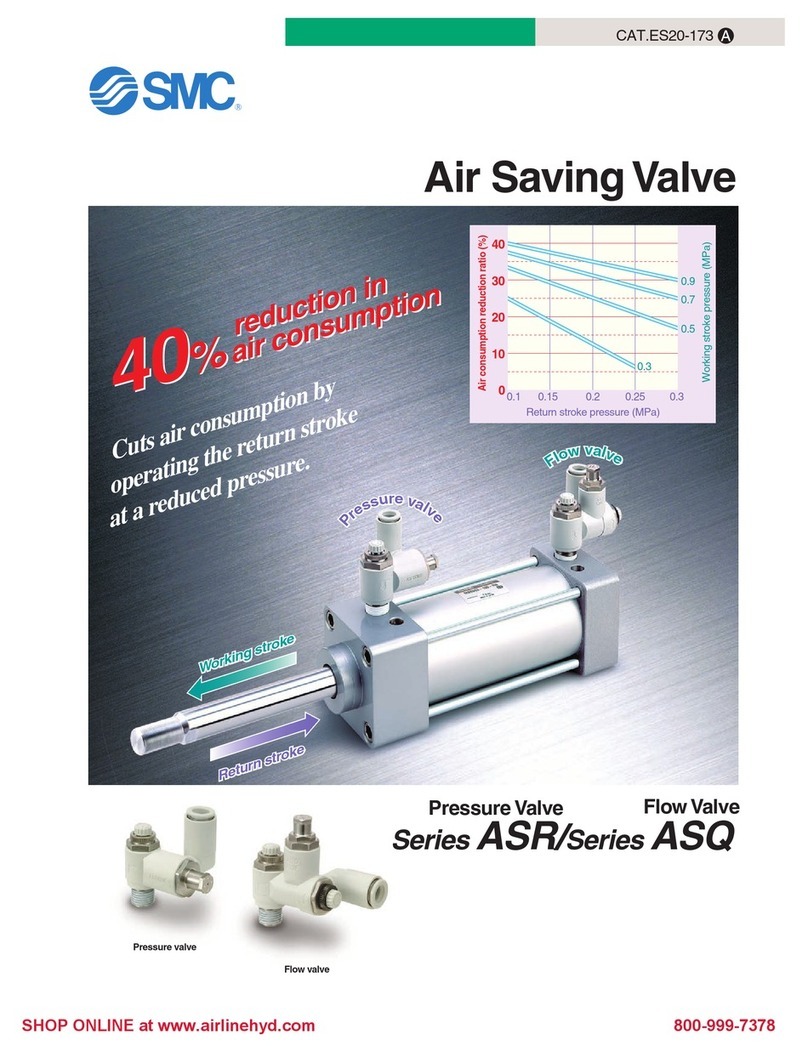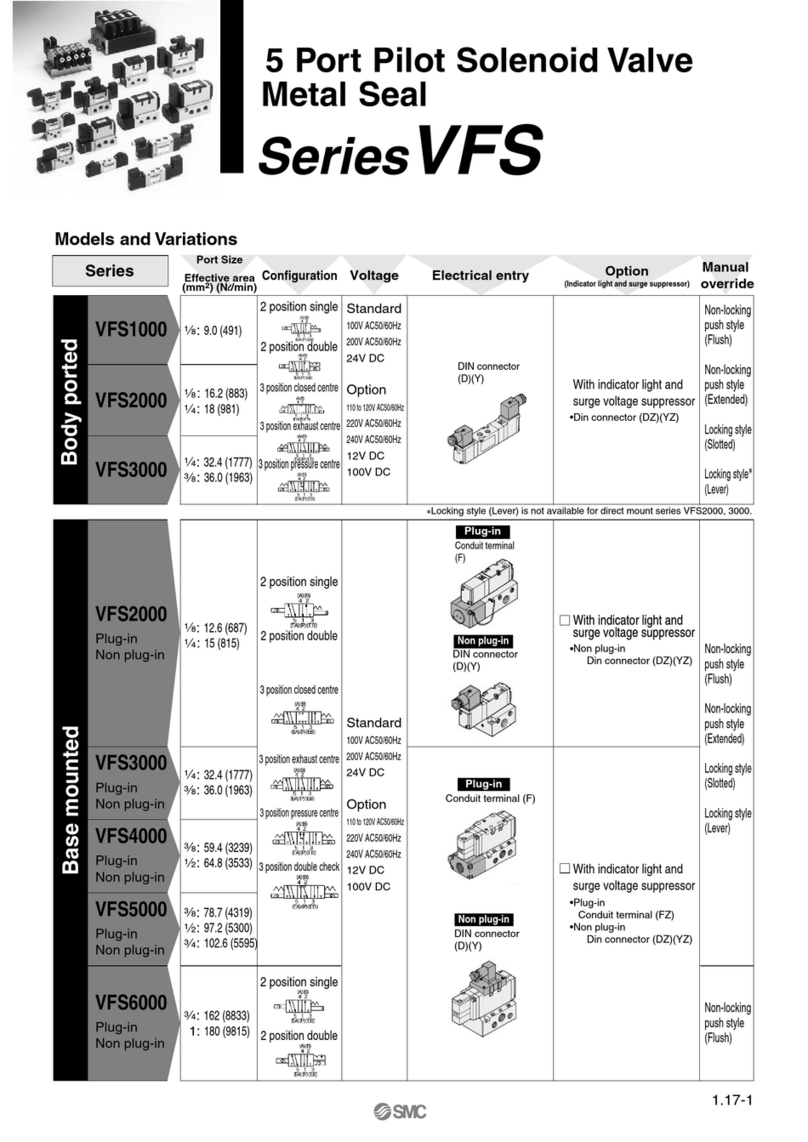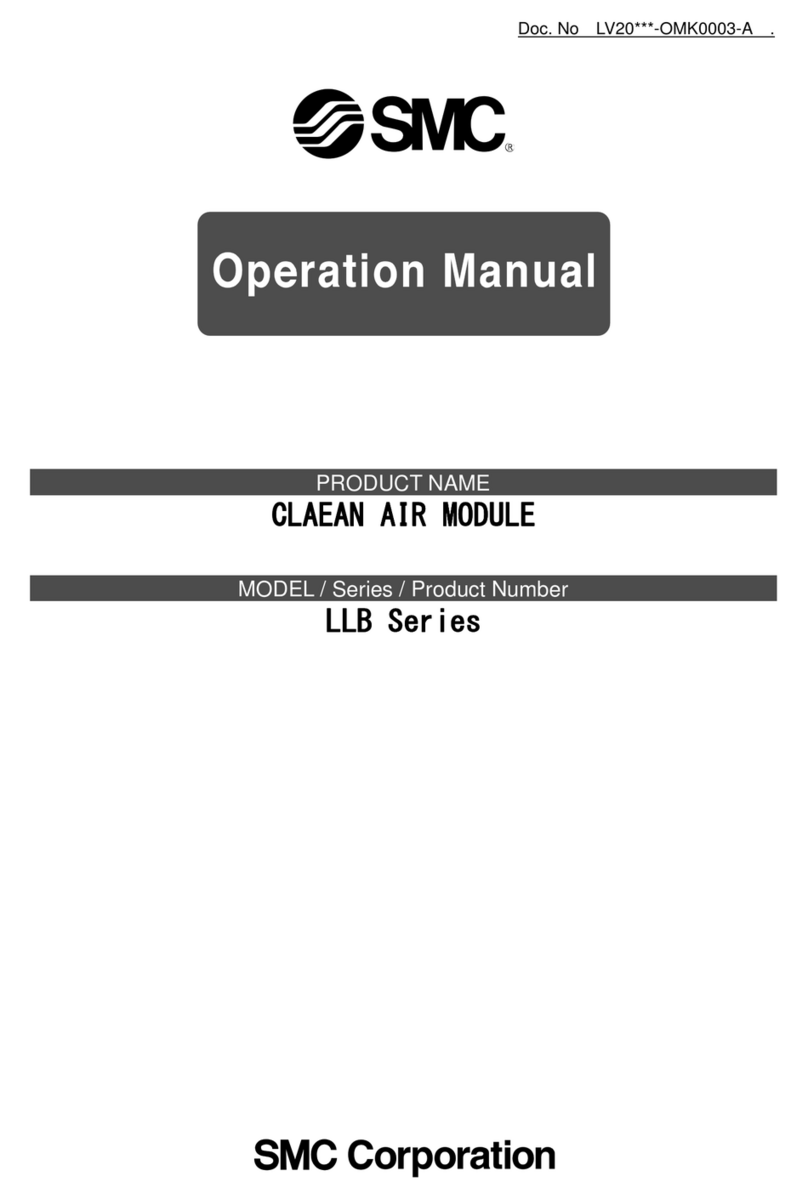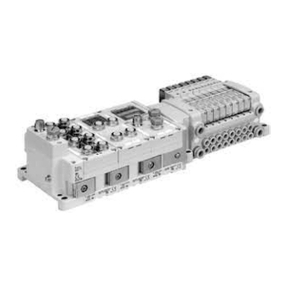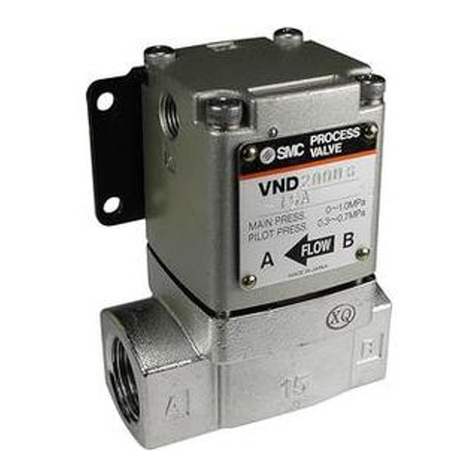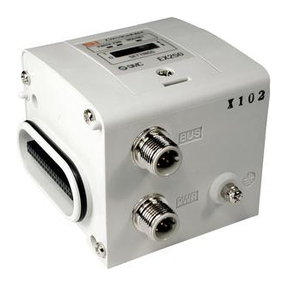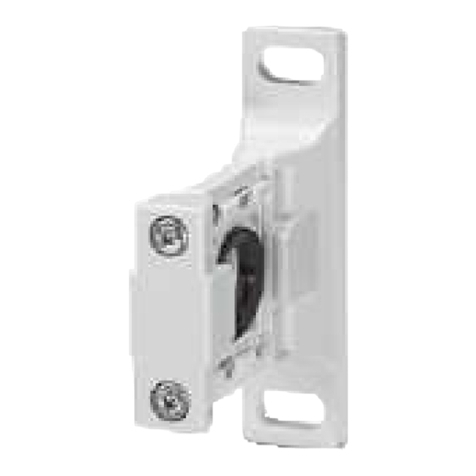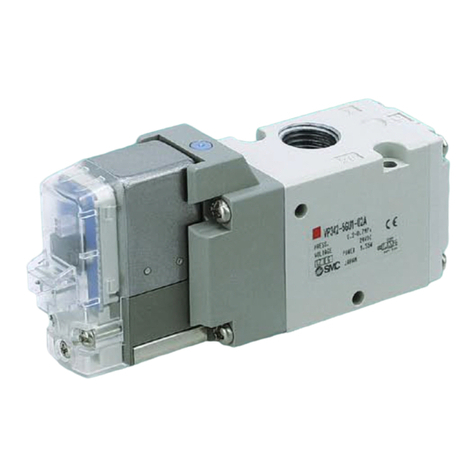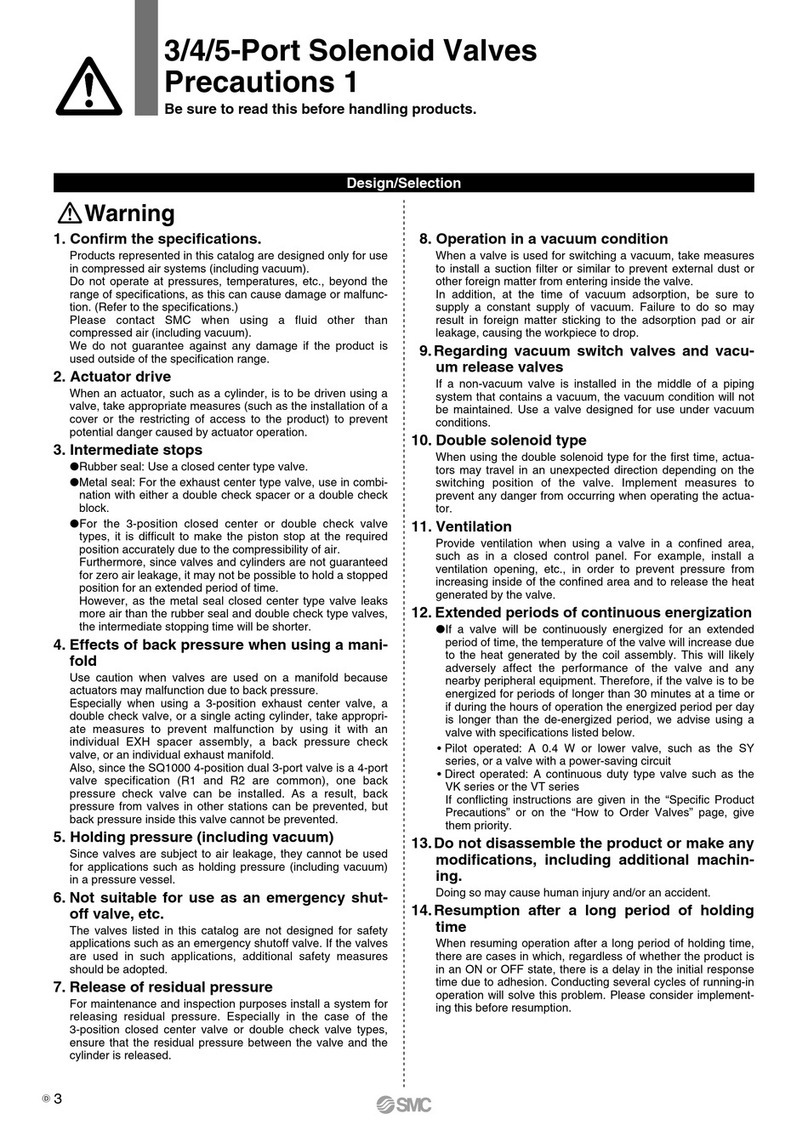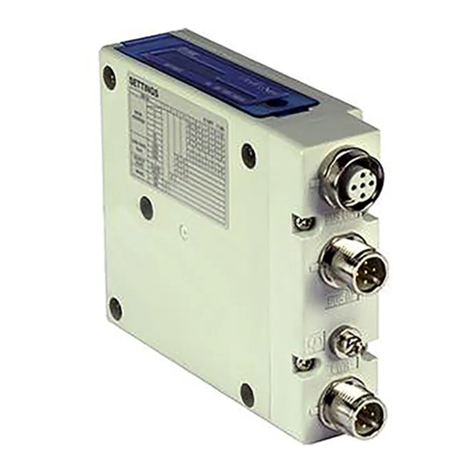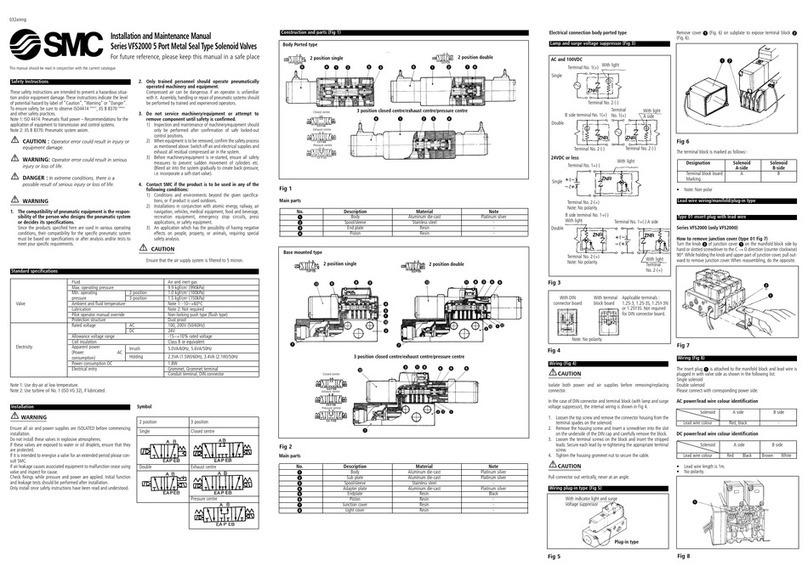
- 7 -
3-1 Operation
Figures 1 and 2B show the state in which Slit ①carrying the work piece is closed and Gate ③(Sealing
material ④) is not clamped (sealed) on Seal surface ②.
In Fig. 2A shows Slit valve opens and Slit ①of the body ⑤is released. So it is a state where the work
piece can be transported.
Figure 2C shows a state in which Gate ③is clamped and Seal surface ②is sealed by Sealing material
④of Gate ③.
3-2 Construction
In Figures 1 and 2, Piston rod ⑦integrated with Piston ⑥and Moving base ⑧are connected by a
displaceable mechanism. And Roller block ⑨is fixed to Moving base ⑧. In addition, Shaft ⑭fixed to
Lever ⑲is separated from each other by the force of Moving base ⑧and Spring ⑬. On the other hand,
since Lever ⑲is restricted by Roller block ⑨and Roller block ⑨that is guided by Cylinder tube ⑩and
Cam follower ⑪⑫ attached there. So Shaft ⑭and Roller block ⑨are mated by reacting force of Spring
⑬then it is possible to move up and down together. Also regarding the external seal, Shaft⑭moving
up and down is done with Bellows ASSY ⑰and O-ring ⑮⑯○
30 . And Static seal part of Bonnet ASSY
and Body ⑤is done with O-ring ⑱.
3-3 At the case Gate CLOSE (Fig2A⇒Fig2B)
By pressurizing to "CLOSE" side port (exhausting "OPEN" side), Moving base ⑧that is connected to
Piston rods ⑦are moving up. On the other hand, since Moving base ⑧pushes up Shaft ⑭integrated
with Lever ⑲by Spring ⑬, Lever ⑲, Shaft ⑭and Gate ③attached to it also go up at the same time,
then Cam follower C ○
21 comes into contact with Stopper ○
20 and stop the up motion and Slit ①of Body
⑤is closed.
In FIG. 2B, the left and right positions of Roller block ⑨and Lever ⑲are restricted by Cam grooves ○
24
○
26 of Roller block ⑨and Cam followers A ○
23 and B ○
25 . Furthermore, the position of Roller block ⑨of
the left-right direction is fixed by Guide groove ○
22 of Roller block ⑨and Cam follower ⑪⑫ fixed to the
cylinder tube ⑩. The distance for the vertical direction between Lever ⑲and Roller block ⑨is constant
because Cam groove ○
24 of Roller block ⑨and Cam follower ○
23 come in contact and are pressed by
Spring ⑬.Therefore, Shaft ⑭/Gate ③fixed by Lever ⑲move up stable when moving from Gate ③
OPEN position in Figure 2A to Gate ③CLOSE position in Figure 2B.
3-4 At the case Gate CLAMP (Seal) (Fig.2B⇒Fig.2C)
Cam follower C ○
21 comes into contact with Stopper ⑳then Lever ⑲/Shaft ⑭and ③stop. On the other
hand, Piston rod ⑦and Roller block ⑨are further going up with compressing Spring ⑬, so Cam
followers A ○
23 and B ○
25 move to the left side following the cam groove ○
24 ○
26 of Roller block ⑨.And
along with that, Lever ⑲/ Shaft ⑭and Gate ③also move to the left side, and O ring ④of the gate ③is
clamped (sealed) to the seal surface ②.
3-5 Unclamp(Fig.2C⇒Fig.2B)
By pressurizing to "OPEN" port side (exhausting "CLOSE" side), Moving base ⑧and Roller block ⑨that
is connected to Piston rods ⑦moves down, so by following Cam groove ○
24 ○
26 Cam follower ○
23 and
Cam follower B ○
25 move to the right, along with which Shaft ⑭and Gate ③also move to the right side
and make unclamp of Gate ③.At that time, Cam follower B ○
25 fixed to the lever ⑲and Cam groove ○
24
of Roller block ⑨come in contact with each other and are fixed vertically by the force of Spring ⑬.And
also Cam groove ○
26 of Roller block ⑨and Cam follower B ○
25 are fixed for the left and right direction so
the left, and right directions movement are fixed.
When Roller block ⑨moves down a slight downward force acts from Cam follower A and ○
23 Cam
follower ○
25 to Lever ⑲, but because pushing up force by Spring ⑬is greater than the downward force,
Gate ③leaves at a right angle.
3-6 At the case Gate OPEN(Fig.2B⇒Fig.2A)
After unclamp (unseal), Gate ③/ Shaft ⑭/ Lever ⑲and Roller block ⑨moves down together, then Gate
③opens and Slit ①of Body ⑤is released.
